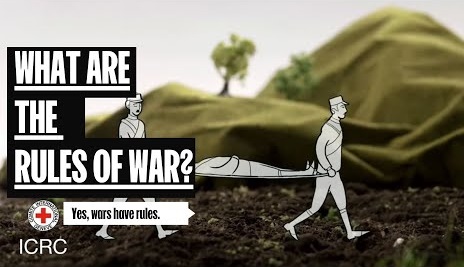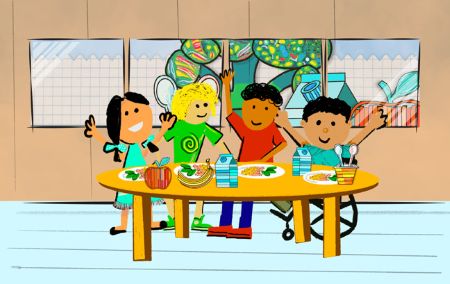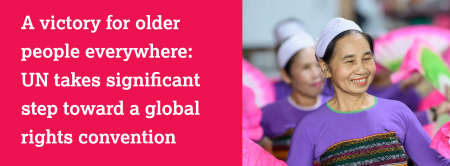
Many of us are heartbroken and angry as daily we follow the horrific news coming out of the Middle East. We hurt for all those suffering terror, violence, displacement, and deprivation, and we fear for more to come. While the media focuses on this most recent tragic conflict, we know that war-related suffering is ongoing in many different places far from the camera lens. Each armed conflict inevitably creates the conditions for a humanitarian crisis, through displacement of civilians and lack of access to food, water and medicines.
How can the Right to Food be protected in the context of war?
Armed Conflicts Drive Food Insecurity
The sad truth is that armed conflict is the main driver of food insecurity in many parts of the world. According to this year’s annual report of the UN Secretary-General on the Protection of Civilians in Armed Conflict, conflict and violence were the most significant drivers of high levels of acute food insecurity for approximately 117 million people in 19 countries and territories in 2022, including the Central African Republic, the Central Sahel, the Democratic Republic of the Congo (DRC), Ethiopia, Nigeria, Somalia, South Sudan, Sudan, Syria, and Yemen.
In these countries and others, the causes of conflict-induced food insecurity included:
- direct harm to food and water sources
- impediments to food and water production, delivery, and access.
Multiple Harms
Destruction of resources in war can sometimes create more catastrophic harm than bombs and bullets. Warring parties may plunder an enemy’s food supply, deliberately destroying farms, livestock, and other civilian infrastructure. Conflict can cause food shortages and the severe disruption of economic activities, threatening the means of survival of entire populations. Additionally, wars commonly trigger the displacement of huge numbers of people, cutting them off from their normal food supplies and livelihoods. Refugees are often vulnerable to acute food insecurity as well as disease. Alternately, if people remain in their homes, surrounding armies can trap people inside a village, city, or neighborhood and deprive them of food, medicine, and other vital resources until they surrender. Many conflict zones desperately need humanitarian aid, but one or both parties in a conflict may block relief operations from reaching starving populations or even carry out attacks against humanitarian organizations.1

International Humanitarian Law
International Humanitarian Law (IHL) applies specifically to situations of armed conflict. It is sometimes called “the law of war” or “the law of armed conflict.” It is a set of internationally-agreed-upon rules which seek, for humanitarian reasons, to limit the effects of war. The intent of International Humanitarian Law is to protect persons who are not, or are no longer, participating in the hostilities and to restrict the means and methods of warfare. International Humanitarian Law is established through treaties such as the Geneva Conventions (established in the aftermath of World War II), as well as “Customary International Law” (established practices not outlined in treaties, but widely accepted as a legal obligation).
International Humanitarian Law and the Right to Food
On May 24, 2018, the United Nations Security Council unanimously passed Resolution 2417, condemning the use of food insecurity and starvation as a tactic of war. It was the first time the Council had ever addressed the issue, acknowledging a threat to the lives of tens of millions of people. Aimed at countries currently engaged in international or civil wars, the resolution implores all parties to leave food stocks, farms, markets, and other food distribution mechanisms intact. It demands parties in conflict permit humanitarian aid workers unimpeded access to populations in dire need, and states that “using starvation of civilians as a method of warfare may constitute a war crime.”
Compliance?
The International Committee of the Red Cross has identified lack of compliance with International Humanitarian Law as “the greatest current challenge to the continued credibility of this body of international law.” 2 For international humanitarian law to effectively regulate the behaviour of warring parties, there is a need for adequate rules, respect for those rules, accountability, and mechanisms to stop violations when they occur. Proper training, dissemination, and implementation of International Humanitarian Law, especially in peacetime, is required to ensure better compliance in times of armed conflict. Many efforts are being made to promote International Humanitarian Law and strengthen compliance. Organizations such as the International Committee of the Red Cross, agencies of the United Nations, and numerous academic, humanitarian, and human rights organizations continue to resolutely do this important work. More than ever, voices are needed calling for the protection of civilian lives and respect for the rule of law. You will find some of those voices below.
Dig Deeper…
- What are the Principles of International Humanitarian Law? Watch this 3-minute video from the International Committee of the Red Cross.
- Food Security in Times of Armed Conflict: What You Need to Know Read this helpful article prepared by the International Committee of the Red Cross to learn more of what International Humanitarian Law has to say about food security, starvation, and the prevention of hunger and famine in situations of armed conflict.
- Why is International Humanitarian Law Important? Read this clear and compelling article from the International Rescue Committee on the what/where/when/who/how/and why of International Humanitarian Law, as well as examples of current global conflicts where violations are taking place.
- Protection of Civilians in Conflict Zones Statement to the UN Security Council May 24, 2022, by David Milliband, President and CEO of the International Rescue Committee, former Secretary of State for Foreign Affairs of the UK.
- Violence and Food Systems This 2-page info sheet summarizes the highlights of a longer report prepared by Michael Fakhri, Special Rapporteur on the Right to Food, for the UN Human Rights Council. (For those who really want to dig deep, Mr. Fakhri’s original 21-page report, Conflict and the Right to Food, gives an account of how different forms of violence in food systems harm people and generate the conditions that lead to human rights violations. For those particularly interested in International Humanitarian Law as it applies to the Right to Food in times of armed conflict, go straight to page 13, Section E.)
[2023-10-30 This is the twentieth installment in GRAN's Small Sips series on The Right to Food.]



